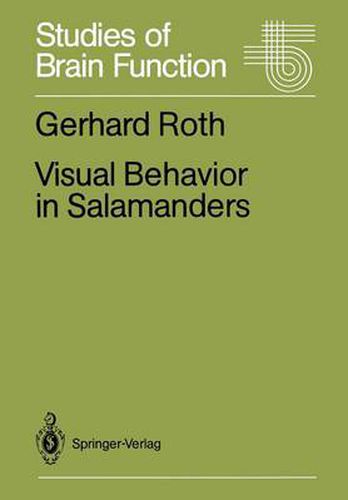Readings Newsletter
Become a Readings Member to make your shopping experience even easier.
Sign in or sign up for free!
You’re not far away from qualifying for FREE standard shipping within Australia
You’ve qualified for FREE standard shipping within Australia
The cart is loading…






This title is printed to order. This book may have been self-published. If so, we cannot guarantee the quality of the content. In the main most books will have gone through the editing process however some may not. We therefore suggest that you be aware of this before ordering this book. If in doubt check either the author or publisher’s details as we are unable to accept any returns unless they are faulty. Please contact us if you have any questions.
Salamanders are subject to misconceptions even among vertebrate zoologists and physiologists. They are often said to exist only in northern temperate zones, being bound to aquatic or very moist cool habitats. In reality, more than half of all salamander species live in subtropical and tropical zones, ex clusively in the New World. Again, more than half of the salamand~r species have become totally independent of aquatic habitats following the loss of a free larval stage. Many of the subtropical and tropical salamanders have become adapted to rather high temperatures up to 26-28 DC. The brain and the sensory systems of salamanders are often considered to be primitive, and their behavior is thought to be simple and uninfluenced by learning. However, careful studies show that the salamander brain possesses virtually all the ana tomical and functional properties found in anurans, which are usually regarded as being much more evolved with respect to the guidance of comparable behavior. Most of the salamander species not only possess a highly efficient visual system, which is the topic of the present work, but can orient themselves almost as effectively by means of olfaction, vibration sense, and electroreception. Furthermore, it has recently been shown that at least part of their behavior, especially that concerned with feeding and prey preferences, is strongly influenced by individual experience.
$9.00 standard shipping within Australia
FREE standard shipping within Australia for orders over $100.00
Express & International shipping calculated at checkout
This title is printed to order. This book may have been self-published. If so, we cannot guarantee the quality of the content. In the main most books will have gone through the editing process however some may not. We therefore suggest that you be aware of this before ordering this book. If in doubt check either the author or publisher’s details as we are unable to accept any returns unless they are faulty. Please contact us if you have any questions.
Salamanders are subject to misconceptions even among vertebrate zoologists and physiologists. They are often said to exist only in northern temperate zones, being bound to aquatic or very moist cool habitats. In reality, more than half of all salamander species live in subtropical and tropical zones, ex clusively in the New World. Again, more than half of the salamand~r species have become totally independent of aquatic habitats following the loss of a free larval stage. Many of the subtropical and tropical salamanders have become adapted to rather high temperatures up to 26-28 DC. The brain and the sensory systems of salamanders are often considered to be primitive, and their behavior is thought to be simple and uninfluenced by learning. However, careful studies show that the salamander brain possesses virtually all the ana tomical and functional properties found in anurans, which are usually regarded as being much more evolved with respect to the guidance of comparable behavior. Most of the salamander species not only possess a highly efficient visual system, which is the topic of the present work, but can orient themselves almost as effectively by means of olfaction, vibration sense, and electroreception. Furthermore, it has recently been shown that at least part of their behavior, especially that concerned with feeding and prey preferences, is strongly influenced by individual experience.